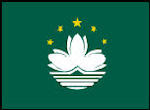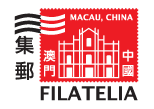Cantonese Naamvarn (narrative songs)
Brief Introduction to Naantyani - sad and touching song
“Naamyam”, “Wooden Fish”, “Dragon Boat” and “Cantonese Folk Songs” are all Cantonese dialect folk songs formed by narrative singing. The linguistic characters of Cantonese dialect originated from the central plains of China (especially the Henan Province, which is traditionally considered as the cradle of Chinese civilization), and has retained the original nine tones and was registered in ancient poetry and books. The structure of “Naamyain” strictly follows the seven syllable and rhyme requirements of ancient Chinese poetry. Classic pieces include Ye Tingrui’s “Wayfarer’s Autumn Lainent” from the Qianlong period: l-le Weiqun’s “Nocturnal Lament”:
Zhao Ziyong’s “Diao Qiu Xi” and “Quit Your Soul’s Sorrow”, as well as ‘Nan Shao Yi”, “JI Xiao Xiang”, and “The Magic Jade Fan”, written by unknown authors (luring the Jiaqing period. All of the authors were accomplished scholars who had taken the imperial examinations. Although most Naaniyam songs were composed in brothels or night clubs, they still convey a sense of loss, melancholy and gut-wrenching emotion. The songs also have patriotic undertones, with performers singing it quietly in a romantic style. On the other hand, Dingban (a method to indicate rhythm in Naamyam) requires precision, but allows for more freedom in singing articulation.
Naamyam is influenced by Tang poems, but different from the “Long-Short Sentence” style of the Song Dynasty, integrated in the singing techniques of Kunqu Opera and Beijing Opera.
Naamyam is influenced by Tang poems, but different from the “Long-Short Sentence” style of the Song Dynasty, integrated in the singing techniques of Kunqu Opera and Beijing Opera.
The “Wooden fish book” texts were printed at the end of the Ming Dynasty, and have since evolved into different types of singing such as “dragon boat” “Naarnyam” and “Cantonese Folk Songs” during the Qing Dynasty, with hundreds of bookshops estimated to have published thousands of different printed texts. These printed texts would usually only have only recorded the lyrics, hut not the tune, although SOII1C also included the narrative singing scripts. Each textual unit in a Naamyam song is a quatrain, with each line containing seven syllables. The final syllable in the first and third line of each quatrain must end with an oblique tone, the second line (known as upper line) must end with an upper even tone and the fourth line (known as lower line) must end with a lower even tone. As repeating those rhythms were like the governing linguistic tones in the Tang Dynasty, famous Naaniyani accents, such as “Theng Xian”, “Yi Fan”, “Pao Zhou”, “Li Hun” and “Liu Shui” could be perfectly presented, with “Pao Zhou”, which has a bitter tune, sung from the throat, being the most touching one.
Naamyam styles can be divided into: Dai Sui Naamyam, Xi Neng Naamyain and hei Toi Naamyain, each with their own unique styles. It is also distinguished by the singer, the performance venues or audience and performances given by blind singers, actresses, during home celebrations, on the streets, in taverns and on song boats will all have unique features. Moreover, depending on the size of the group, the singing could be accompanied by the Yanqin (hammered dulcimer), the Yehu (coconut-shelled lute), the San-i-Isuan tïddle, the Xiao (vertical end-blown flute), the Pipa (seven-stringed Chinese lute), the Qinqin (three-stringed Chinese lute) or the Ban (wooden clapper percussion instrument). The instruments could be played by the singer, or by fellow musicians, not all of whom were blind. Young blind girls were trained by their masters to be musicians capable of both singing and playing instruments at the same lime. With the development of society and the economy, the ways of entertainment become varied. Away from brothels or night clubs, Naamyam singers would also be invited to perform in events such as weddings, celebrations or funerals. As Naaniyam singers were mostly blind, they could sing among women in rich families.
On the other hand, there was a big difference in the way the careers of the Naamyam blind musicians in Hong Kong, Macao and Mainland China developed. Singers from Mainland China would dedicate themselves to the pursuit of excellence in singing technique, opting to keep to strictly defined standards. In contrast, Hong Kong and Macao were capable of broadcasting long-tenu radio programs dedicated to Naanmyani songs. The popularity of blind musicians in Hong Kong and Macao was consequently widespread, with some artists even releasing records of their own.
Even though the boom period of Naamyam has long gone, several celebrities and communities have been working tirelessly to save the ancient tradition of Naamyam. With the assistance of Macao SAR, Naamyam was recently inscribed in the National Intangible Cultural Heritage list. “Naamyamn” has become a unique item in the culture of Macao.
Author Chan Chi Vai
The Stamps:
The Sheetlet:
The Souvenir Sheet:
The FDC with Stamps:
The FDC with Souvenir Sheet:
The Post Mark:
Dados Técnicos/Technical Data
Valor dos Selos/Stamps Value: 4 stamps of 1.50, 2.50, 3.50 and 4.00 Patacas
Folhas Miniatura com quatro séries/Minisheets with four sets
Valor do Bloco/Souvenir Sheet Value: 10.00 Patacas
Desenho/Design: Chan Chi Vai
Data emissão/Issue date: 30.05.2011
Impressor/Printer: Cartor Printing Security, France
Impressão/Print: Offset Lithography
Papel/Paper: Paper with Security Fibers
Picotagem/Perforation: 13¼ x 13¼


























